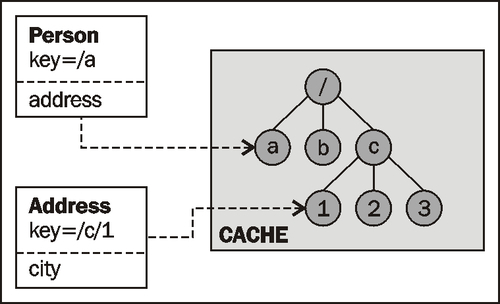JBoss Cache provides the foundation for many clustered services, which need to synchronize application state information across the set of nodes.
The cache is organized as a tree, with a single root. Each node in the tree essentially contains a map, which acts as a store for key/value pairs. The only requirement placed on objects that are cached is that they implement java.io.Serializable.

Actually EJB 3 Stateful Session Beans, HttpSessions, and Entity/Hibernate rely on JBoss Cache to replicate information across the cluster. We have discussed thoroughly data persistence in Chapter 6, Tuning the Persistence Layer, so we will focus in the next sections on SFSB and HttpSession cluster tuning.
The core configuration of JBoss Cache is contained in the JBoss Cache Service. In JBoss AS 5, the scattered cache deployments have been replaced with a new CacheManager service, deployed via the <server>/deploy/cluster/jboss-cache-manager.sar/META-INF/jboss-cache-manager-jboss-beans...



